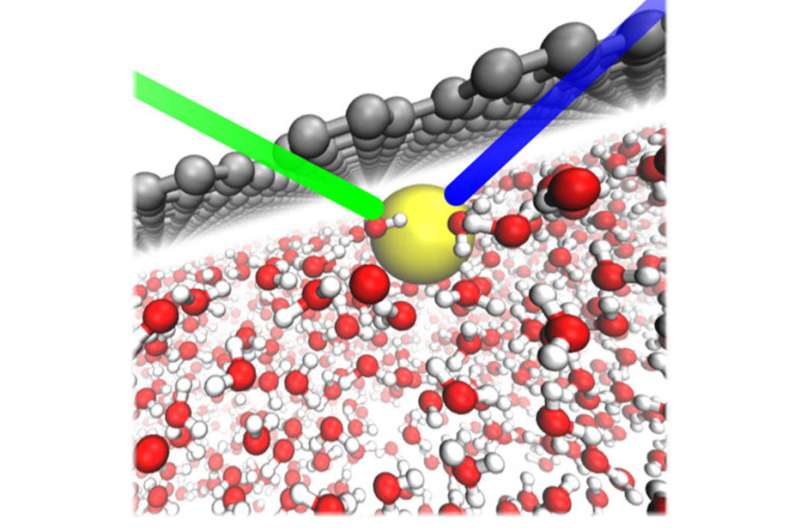The subtle role of surfaces in ion stickiness

How ions stick to surfaces greatly influences vital processes in everything from water purifiers to batteries. For decades, scientists have debated the mechanics of such binding, or adsorption. Certain ions in water didn't adsorb to a surface as predicted. Now, scientists know why. By studying a graphene surface immersed in water, scientists showed that an interaction between the graphene and an ion drives the adsorption, unlike the case for the air/water interface.
When it comes to ion adsorption, there are subtle, but important, differences at the molecular scale. Thus, scientists need to consider these differences when working with ions and surfaces in water. These interactions are present in everything from battery construction to nerve signaling to cloud formation.
In many areas of science and technology, the adsorption of ions to aqueous interfaces plays a key role. For a long time, chemistry and physics texts have stated that all ions are repelled from interfaces between water and a hydrophobic material. However, new experiments and computer simulations have shown that certain ions, known as chaotropic ions, don't follow that pattern. Researchers investigated why those ions adsorb differently.
They examined thiocyanate ions sticking to a sheet of graphene (a thin, noncharged carbon surface) immersed in water. Using deep ultraviolet second harmonic generation measurements of the ion, along with associated computer simulations, the team determined the free energy of ion adsorption. While the free energy involved in adsorbing the ion to the graphene/water interface is nearly identical to the corresponding value for an air/water interface, the research shows the mechanisms involved to be totally different.
While adsorption at the air/water interface is dominated by solvent repartitioning, in which the water molecules change position and orientation near the ion, direct interactions of the ion with graphene dominate in the case of graphene/water interfaces.
More information: Debra L. McCaffrey et al. Mechanism of ion adsorption to aqueous interfaces: Graphene/water vs. air/water, Proceedings of the National Academy of Sciences (2017). DOI: 10.1073/pnas.1702760114
Journal information: Proceedings of the National Academy of Sciences
Provided by US Department of Energy

















